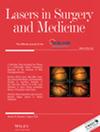Exploring Fractional Pigment Toning: A Novel Approach for Treating Benign Pigmented Lesions in Asian Patients With Fitzpatrick Skin Types III–V
Abstract
Background/Objective
Laser therapy has emerged as a widely favored treatment option for solar lentigines (SL). However, a significant challenge associated with this treatment, particularly among individuals with darker skin tones, is the notable risk of postinflammatory hyperpigmentation (PIH) induction. In response to these concerns, the authors conducted a prospective, self-controlled study to comprehensively evaluate the safety and effectiveness of 532-nm picosecond laser, both with and without a microlens array (MLA), for the management of SL in patients with Fitzpatrick skin types (FST) III–V.
Methods
Twenty-seven patients with FST III–V and bilateral SL on the face underwent randomized treatment. One side of the face was treated with a 532-nm picosecond laser coupled with an MLA, utilizing the fractional pigment toning (FPT) technique, while the other side received treatment without the MLA, following the conventional technique (CT). The FPT technique utilized a 9-mm spot size with a fluence of 0.47 J/cm2 for two passes covering 40% of the area. In contrast, the CT used a 4.5-mm handpiece with fluence ranging from 0.3 to 0.7 J/cm2. Patients received a single treatment and were evaluated for pigment clearance, occurrence of PIH, and other adverse effects at 2 weeks, 1, 3, and 6 months posttreatment.
Results
Twenty-seven participants completed the study protocol. Analysis of pigment clearance, measured via 3D photography, showed significant improvement from 2 weeks to 6 months posttreatment for both the FPT technique (p < 0.001) and CT (p = 0.004). PIH occurred in 64%, 80%, 96%, and 88% of cases on the CT side, compared to 8%, 32%, 36%, and 16% on the FPT technique side at 2 weeks, 1, 3, and 6 months posttreatment, respectively. The incidence of PIH was significantly lower on the FPT technique side compared to the CT side throughout the follow-up periods. Additionally, transient and mild hypopigmentation occurred in one participant (4%) on the FPT technique side and in five participants (20%) on the CT side. No other adverse effects were observed during the study.
Conclusions
The 532-nm picosecond laser emerges as a safe and efficacious treatment modality for SL in individuals with FST III–V. Particularly noteworthy is the efficacy of the FPT technique, which demonstrates comparable effectiveness while significantly reducing the incidence of PIH compared to the CT.


 求助内容:
求助内容: 应助结果提醒方式:
应助结果提醒方式:


